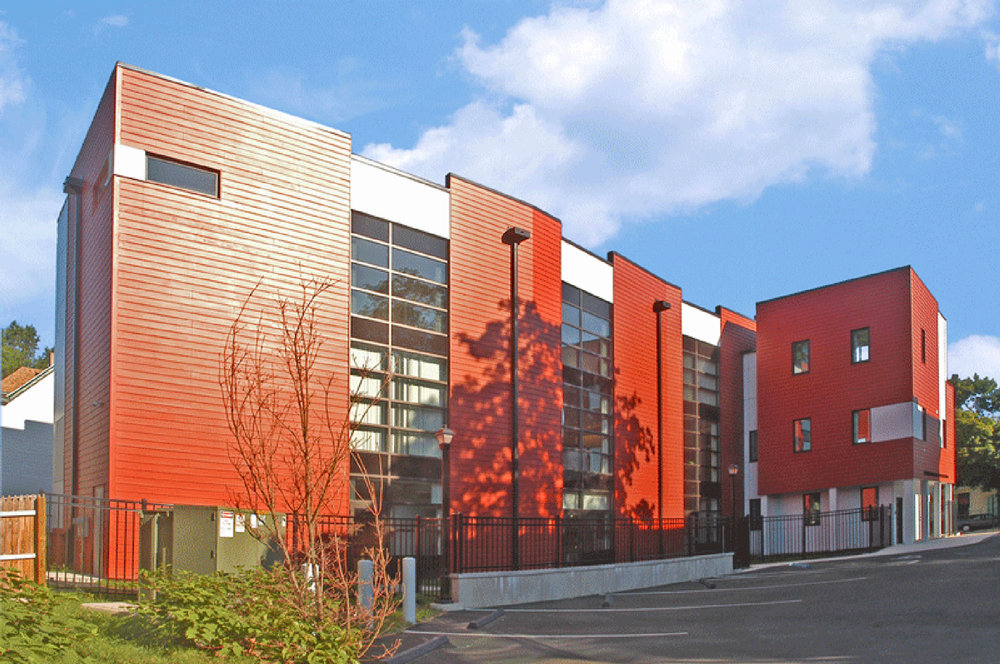
|
Donations for the Jay Pottinger Memorial can be sent to the Greater Dwight Development Corporation: 230 Edgewood Avenue |
GDDC is extremely proud to announce that we have been selected as a recipient of a COMMUNITY ECONOMIC DEVELOPMENT GRANT from the HHS Office of Community Services. This money will go towards expanding our childcare to a new site, and also towards establishing 5 new home child care centers in the Dwight neighborhood.
Greater Dwight Development Corporation (GDDC), formed in 1994, is housed in the new modern Alvis Brooker Building at 230 Edgewood Avenue, New Haven CT. The building’s architect was the Yale Urban Design Workshop. GDDC is a tax-exempt social enterprise created by neighborhood residents and their partners. It invests in the social and economic life of the Dwight Community.
GDDC. A PROGRESSIVE DWIGHT OVER TIME.

GDDC office at 230 Edgewood Avenue, New Haven, CT.
THE DWIGHT STORY SELDOM TOLD
New Haven is a city of neighborhoods each with a strong neighborhood identity. The Dwight area was originally a vast area of farmland adjacent to the west end of downtown and Yale University. The Dwight neighborhood is bounded by Park Street on the east, Sherman Avenue on the West, Whalley Avenue on the north, and Martin Luther King Boulevard (North Frontage Road) on the south. Yale University and Yale New Haven Hospital St. Raphael Campus, the Whalley Avenue Special Services District, and Chapel West Special Services District and the Yale New Haven Hospital are within or on the borders of the neighborhood. The majority of the buildings in the Dwight community are 19th century Victorian masterpieces and were included in a designated Dwight Historic District by the National Register of Historic Places in 1983.
New Haven experienced a storied American industrialization with a number of carriage factories, piano makers, gun makers and clock makers. Between 1840 and 1860 Dwight, Orchard, and Kensington streets were constructed with beautiful 19th century homes where the workers of this community lived. By the 1970s many residents and businesses had moved to the suburbs. This was a national phenomenon that challenged many cities. Homeownership and investment in the neighborhood declined as a result.
In the 1990’s a belief in Dwight’s community strengths by the residents who lived and worked here for more than fifty years led them to transform their community. Throughout the years the Dwight neighborhood has forged partnerships and nurtured leaders committed to making change actually happen, and it did.
This is their legacy, this is their story.
The Dwight community today is the multi-cultural home and workplace for students, professionals, small businesses and educators. Its Education Corridor on Edgewood Avenue includes three new schools: The Montessori School on Edgewood Avenue, Amistad Academy Middle School, and the renovated Augusta Lewis Troup School. Many now choose to live here because of an urban environment, rich in restaurants, museums, music and the magic that is the rebuilding of New Haven.
GDDC recognizes the efforts of our leadership, in particular Toni Harp our current mayor and former State Senator who has been a champion of the New Haven community for over 20 years. By her support of the re-development of the New Haven People’s Community Center at 37 Howe Street, the creation of the Dwight Place Shopping Plaza at 150 Whalley Avenue, and numerous family and community initiatives, New Haven is on the move

